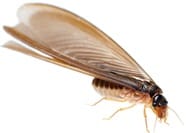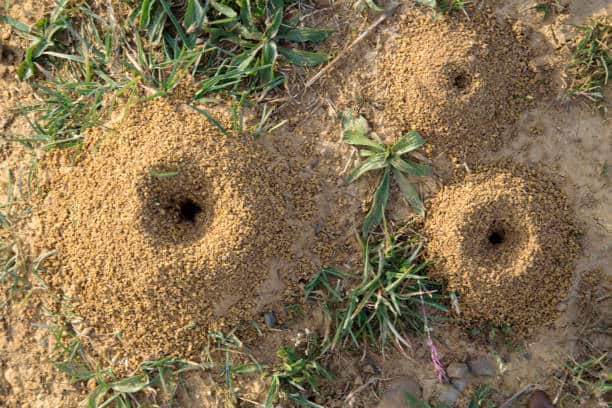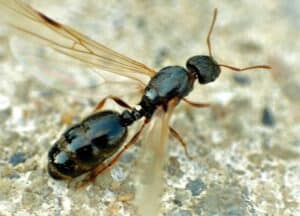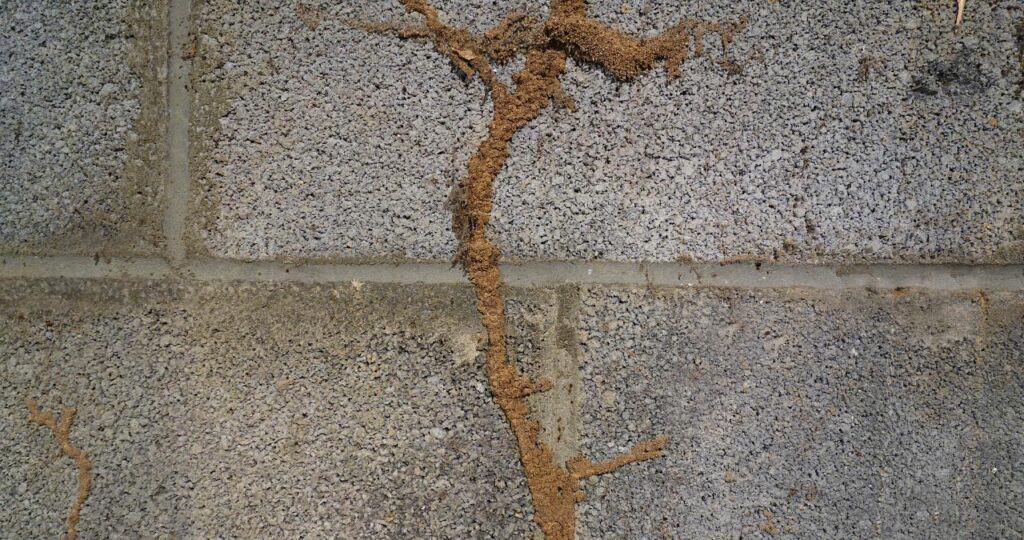Imagine waking up, having a nice cup of coffee as you glance out your window to a warm, sunny day… to see that you have a swarm of flying bugs blocking your view! What are they you may ask? Often times, we see ants and termites come out in swarms to make their appearance. We’re going to dig right into finding out what they are and why they are there.
Are they ants?
Ants, like termites, are social insects that divide their workloads into divisions. Also like the termite, ants colonies produce reproductive swarmers. The sole purpose of these swarmers is to begin new colonies. Most ant colonies can produce swarmers in as little as a year of colonization. Ants produce reproductive swarmers several times a year. Fire ants are known to have multiple queen colonies, therefore their colonies grow faster and produce larger amounts of reproductive swarmers. Each spring as the weather begins to warm from a cold winter, ants and termites release their swarmers into nature making
Or are they termites?

Termites are social insects as well but are blind. Pheromones guide termites to their trails, food and even alarm termites when something is wrong. Unlike the ant colonies, termites produce reproductive swarmers once per year. Also unlike ants, termites need roughly three years to produce swarmers. Eastern Subterranean Termites usually swarm during early Spring the day after a good rain and when the weather is warmer.
So, what’s the difference?
The first noticeable difference in comparison are the wings. The ant and termite both have two pair of wings. However, the ant wings are two distinct pair containing two sizes of wings with a more defined vein pattern and wing structure. Termites have two sets of wings as well, however, all four wings are the same size. When the wings are at rest and covering the body, the wings are almost double the size of the body of the termite. In addition, the wings do not have the same defined wing structure as the ant.
Next, the body. Ants have three distinguished segmented body parts with a pinched abdomen. Termites contain no distinguished segmented body parts.
Third is behavior. Since termites shed their wings once they have found an appropriate spot, it is often hard to tell the insect by wings alone. Normally you will see a queen termite being followed extremely close by the king termite. Since the swarmers sole purpose is to start a new colony in the appropriate conditions, termites waste no time pairing up and find that perfect spot to nest.
Finally, the forked versus non-forked antennae. You have to examine this feature really closely, however, it is truly distinguishing. Ants have forked antennae. Forked meaning the antennae leave the head at 90 degrees, then sharply turn 90 degrees again. Termite antennae are simply attached to the head and are fairly straight.
Why does it matter?

Very few of the ant species are capable of significant damage to your structure, they create ‘harmless’ colonies (shown to the left) and prefer sweets. Termites on the other hand account for over 5 billion dollars in damage to US homeowners and it all starts with years of going undetected. The mud tubes in the photo below display signs of termite activity. Knowledge and identification are key in determining which winged insect you are looking at if you are seeing swarmers. If you have any doubt or would prefer a professional opinion, never hesitate to call Barnes Exterminating for a free evaluation.


